The average healthcare system is no stranger to financial pressures. Even back in 2017, Deloitte estimated that over 50% of hospitals would hit negative margins by 2025 due to payer mix changes, regulatory frictions, and rising labor costs (which are primarily fueled by hyper-competitive fields like physicians, nurse practitioners, and physician assistants. Now, with COVID-19, an accelerated regulatory atmosphere, a shift in practice habits (e.g., the rise of virtual visits), and shaky supply chains, the pressure to build resilient healthcare revenue streams has never been higher.
Forty-seven percent of healthcare CFOs admit that financial viability is their biggest concern in 2020. The rising costs of PPE combined with canceled elective procedures and COVID-19 hospitalizations have put immediate financial pressure on hospitals, and the changes in patient visitation, technology, and labor acquisition put a question mark on future financial strategies.
Perhaps the most succinct summation of today's financial frictions in healthcare comes from a CFO of a large integrated health system in their conversation with Deloitte:
"The biggest unknown—and I shared this concern with my peers—what will be the new normal?"
What does the future hold? How can you create a robust financial plan in the midst of uncertainty? What tools can you use to contain costs and preserve revenue streams?
Hospital Revenues Have Sharply Declined & Expenses Have Risen
As it currently stands, hospitals are losing $50.7 billion per month, and which is expected to continue for at least 12 months. When we break down the contributing factors that result in losses, we see more of a convergence of past and current frictions than a single underlying cause.
-
- PPE: The cost of PPE has increased by over 1,000% in some areas, and hospitals are pressured to bid in a highly competitive market to secure critical safety equipment.
- Unemployment: Experts suggest that the number of uninsured Americans could reach 40 million by the end of the year due to unemployment issues.
- COVID-19 hospitalizations: The Kaiser Family Foundation estimates that COVID-19 hospitalizations cost health systems $20,000 ($80,000 for those that require ventilation).
- Forgo of care: Healthcare providers are concerned that COVID-19 is causing fearful patients to avoid the hospital — and statistics back them up.
- Canceled elective surgeries: The Centers for Medicare & Medicaid Services (CMS) advised healthcare systems to eliminate elective surgeries during the pandemic months.
- Supply chain frictions: COVID-19 has fundamentally degraded various components of the healthcare supply chain, and it could be some time before they're back to fully operational.
- Labor frictions: Between healthcare workers leaving due to the nature of the pandemic to the already intensified healthcare labor shortage, finding critical healthcare employees is a daunting (and often expensive) task.
- Drug shortages: To be fair, drug shortages have been an ongoing issue. In 2019, drug shortages were costing hospitals $359 million a year — on labor costs alone. Now, with supply chain frictions and labor costs, drug shortages are a crutch for CFOs already balancing far too many plates.
Of course, this merely scratches the surface. The semi-intangible costs of employee happiness, healthcare views in America, payer mix shifts, and regulatory pressures are also draining, so that's far from an exhaustive list. Thankfully, mitigating some of these costs and breeding a healthcare resiliency culture starts by tackling more controllable healthcare components — like your provider workforce.
The Role of Workforce Management
Workforce optimization — or the process of reviewing budgets, production, and staffing in each department — can help healthcare systems maximize labor efficiencies while reducing cumbersome labor costs that can quickly impact the bottom line. On the surface, workforce optimization can help you quickly supplement staff, eliminate pesky cost centers, and redefine labor boundaries. But, behind the curtain, workforce optimization is an incredibly powerful resiliency tool.
Workforce Optimization can reduce labor costs without impacting the quality of care, provide visibility into your cost architecture, and reduce burnout for both physicians and CFOs. In a period where elective surgeries are piling up due to backlogs, labor costs are spiraling as physicians and nurses deal with new COVID-19 challenges and safety guidelines, and management is carefully navigating the tumultuous waters of cost control, workforce management can help you rally the troops effectively and safely across your healthcare system.
How VISTA Select Can Help
VISTA Select — a full-service Managed Service Provider (MSP) solution powered by a world-class Vendor Management System (VMS) — helps healthcare systems breed end-to-end workforce management solutions. The VISTA Select MSP features rich analytics, robust reporting, and an unparalleled partnership network to help you uncover labor revenue leakage and create a sustainable workforce.
When we look at the significant problems plaguing the modern healthcare industry — from the shift to telehealth to physician shortages and regulatory pressures — labor is the lever that unlocks tangible resiliency in modern healthcare systems. With VISTA, you can quickly monitor and control your workforce, across departments, while quickly flexing recruitment and reassignment strategies. Our preferred partner network can help you instantly find in-demand nurse practitioners, CRNAs, PAs, and physicians, while our industry-leading workforce management tool can help you discover precisely when and where you need their talent most.
By partnering with the country's leading recruiters and talent networks, we will help you find valuable healthcare talent without forcing you to pay additional hidden costs beyond the physician’s actual price. We offer a single point of contact, and a robust system for full-service managed staffing support. Our SaaS model VMS delivery keeps costs low, and legacy servers and integration woes at a minimum.
The truth is: healthcare costs are rising. The first step towards better informing your fiscal decisions and creating a strategic financial plan is solving your labor and workforce issues. VISTA can help.
Combating the Rising Costs of Healthcare Staffing
Between payer mix changes, regulatory pressures, and rising labor costs, healthcare is already vulnerable. COVID-19 has accelerated those vulnerabilities. Are you struggling to find profitability between COVID-19 and traditional healthcare systems? VISTA can help you optimize your workforce to reduce those financial pressures. Contact us to learn more.


